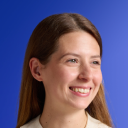N. 94557817

Henri Cartier-Bresson (1908 - 2004) - Student of the Protestant American University in a People's Procession at Nanking, 1948-49
N. 94557817

Henri Cartier-Bresson (1908 - 2004) - Student of the Protestant American University in a People's Procession at Nanking, 1948-49
_scroll down for english text_
Da collezione personale, rara e stupenda fotoincisione (photogravura) originale di Henri Cartier-Bresson (1908 - 2004) del 1956 dal titolo: - Student of the Protestant American University in a People's Procession at Nanking, 1948-49 - magnificamente stampata su carta leggera e in eccellenti condizioni di conservazione (il foglio non è stato mai esposto e non presenta segni di adesivi o colle!)
La fotoincisione viene venduta comprensiva del suo passepartout a cartella di qualità museale e certificato di autenticità.
La cornice non fa parte del lotto e non viene venduta insieme alla fotoincisione!
Imballo professionale in robusto cartone polionda incrociato.
Dimensioni immagine 116x173 mm
Dimensioni foglio 136x182 mm
Dimensioni passepartout 50x40 cm
Nel dicembre 1948, Henri Cartier-Bresson si recò in Cina su richiesta della rivista Life. Finì per restarci dieci mesi e catturò alcuni dei momenti più spettacolari della storia cinese: fotografò Pechino negli "ultimi giorni del Kuomintang", e poi tornò a Shanghai, dove fu testimone della presa del potere del nuovo regime.
Nato a Chanteloup, Seine-et-Marne, nel 1908, Henri Cartier-Bresson sviluppò fin da piccolo una forte fascinazione per la pittura, in particolare per il Surrealismo. Nel 1932, dopo aver trascorso un anno in Costa d'Avorio, scoprì la Leica, la sua macchina fotografica preferita in seguito, e iniziò una passione per la fotografia che durò tutta la vita. Tenne la sua prima mostra alla Julien Levy Gallery di New York nel 1933. Fatto prigioniero di guerra nel 1940, evase al terzo tentativo nel 1943 e in seguito si unì a un'organizzazione clandestina per assistere prigionieri ed evasi. Nel 1945, fotografò la Liberazione di Parigi con un gruppo di giornalisti professionisti.
Nel 1947, con Robert Capa, George Rodger, David “Chim” Seymour e William Vandivert, fondò la Magnum Photos. Dopo tre anni trascorsi viaggiando in Oriente, tornò in Europa nel 1952, dove pubblicò il suo primo libro, Images à la Sauvette (pubblicato in inglese come The Decisive Moment). Spiegò il suo approccio alla fotografia in questi termini: “per me la macchina fotografica è un album di schizzi, uno strumento di intuizione e spontaneità, il padrone dell'istante che, in termini visivi, interroga e decide simultaneamente... È con l'economia dei mezzi che si arriva alla semplicità dell'espressione”.
---------------------------------------------
From a personal collection, rare and wonderful original photoengraving by Henri Cartier-Bresson (1908 - 2004) from 1956 entitled: - Student of the Protestant American University in a People's Procession at Nanking, 1948-49 - magnificently printed on light paper and in excellent conservation conditions (the sheet It has never been displayed and has no signs of stickers or glue!)
The photoengraving is sold including its museum quality passepartout and certificate of authenticity.
The frame is not part of the lot and is not sold together with the photoengraving!
Professional packaging in sturdy crossed corrugate cardboard.
Image dimensions 116x173 mm
Sheet dimensions 136x182 mm
Passepartout dimensions 50x40cm
In December 1948, Henri Cartier-Bresson traveled to China at the request of Life magazine. He wound up staying for ten months and captured some of the most spectacular moments in China’s history: he photographed Beijing in “the last days of the Kuomintang,” and then headed back to Shanghai, where he bore witness to the new regime’s takeover.
Born in Chanteloup, Seine-et-Marne, in 1908, Henri Cartier-Bresson developed a strong fascination with painting early on, particularly with Surrealism. In 1932, after spending a year in the Ivory Coast, he discovered the Leica, his camera of choice thereafter, and began a lifelong passion for photography. He had his first exhibition at the Julien Levy Gallery in New York in 1933.
Taken prisoner of war in 1940, he escaped on his third attempt in 1943 and subsequently joined an underground organization to assist prisoners and escapees. In 1945, he photographed the Liberation of Paris with a group of professional journalists.
In 1947, with Robert Capa, George Rodger, David “Chim” Seymour, and William Vandivert, he founded Magnum Photos. After three years spent traveling in the East, he returned to Europe in 1952, where he published his first book, Images à la Sauvette (published in English as The Decisive Moment).
He explained his approach to photography in these terms, “for me the camera is a sketch book, an instrument of intuition and spontaneity, the master of the instant which, in visual terms, questions and decides simultaneously… It is by economy of means that one arrives at simplicity of expression.”
Potrebbero interessarti anche
-
-
-
-
-
-
-
-
-
-
Questo oggetto era presente in
Come fare acquisti su Catawiki
1. Scopri oggetti speciali
2. Fai l’offerta più alta
3. Paga in tutta sicurezza
